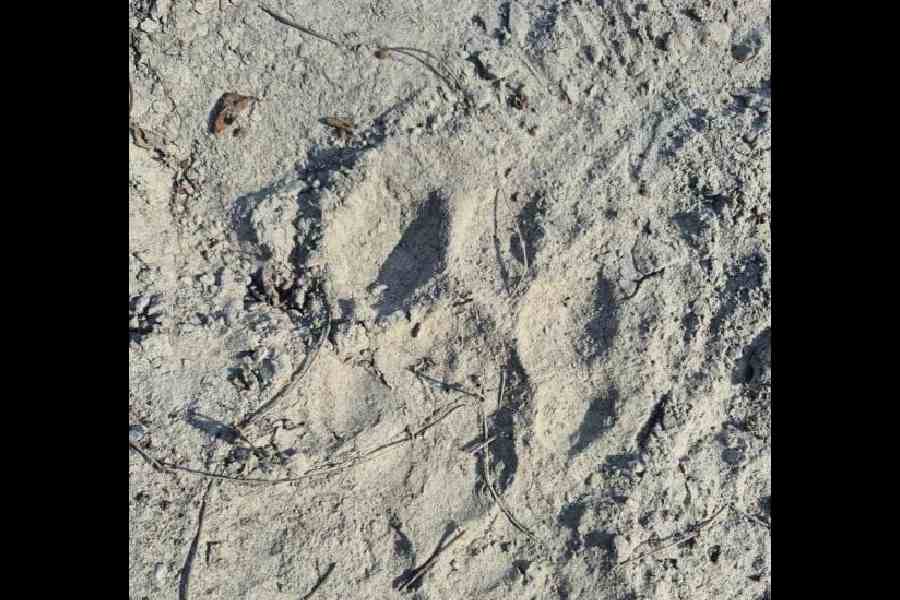 |
Bhubaneswar, Jan. 2: Kotgarh Wildlife Sanctuary in trouble-torn Kandhamal district has become famous for its elephants, tigers and antelope population.
Spread over 400 sq.km of deep and dense forests — over the jurisdiction of Kotgarh and Tumudibandha ranges of Baliguda Forest Division under Kotgarh, Tumudibandha and Daringbadi revenue blocks of Baliguda sub-division — the sanctuary is one of the most important wildlife reserves of Orissa with five reserve forests, three proposed reserve forests and two deemed protected forests within its fold.
A known tiger habitat, the forest patch is adjacent to an old elephant corridor from Boudh, Karlapat and Lakhari valley in Gajapati district’s Gandahati waterfall region.
“Although human habitation in many parts of the elephant corridor is threatening the region for the last five to six years, large-scale poaching of elephants, bear and sloth bear is affecting the wildlife population. But, still the region enjoys the distinction of having the largest percentage of landmass under forest cover in the entire state,” said herpetologist Pratyush Mohapatra, who is a regular visitor to the area.
“The fauna of Kotagarh Wildlife Sanctuary consists of tiger, leopard, nilgai, sambar, barking deer, peafowl, wild boar, gaur, four horned antelope, civet cat, jackal, rattle, sloth bear, pangolin, porcupine, giant squirrel, mongoose and others.
It also has a rich avian life and reptiles. Still, the recent discovery of Boiga frostenii (cat snake) by our team is an example of the rich herpeto-faunal diversity of the region. The different variety of vegetation in Kotagarh also deserves special mention,’’ added Mohapatra.
“The main vegetation of the sanctuary consists of dense moist deciduous forests with grasslands. Around 52 villages having primitive tribals such as Kutia Kondh and Desia Kondh inhibit the sanctuary. The lush greenery of the wildlife sanctuary coupled with the serene ambience is ideal for tourists who want to enjoy a leisurely vacation. Although there is a forest rest house in the sanctuary at Belghar, the recent Maoist incidents have caused some impediments. So, it is safe to stay at Daringbadi, near the sanctuary. Daringbadi has got many budget and luxury accommodation facilities with its recent recognition as the most preferred hill station of Orissa,’’ said Mohapatra.
Ecologist Prashad Dash of Vasundhara said: “The sanctuary also shelters different types of colourful birds. It is 250 km from Berhampur and 60 km from Baliguda and is positioned at the central part of the proposed South Orissa Elephant Reserve. It holds great attraction for naturalists and eco-tourists because of leopard, tiger, elephant, gaur, sambar, spotted deer and wolf. The key attraction of the sanctuary is the presence of four horned antelope or Chausingha (Tetraceros quadricornis), which was earlier reported from Satkosia Gorge Sanctuary and Similipal Tiger Reserve only.”
“Apart from wild animals, the sanctuary is an abode of several varieties of invertebrates such as butterflies, moths, dragonflies and spiders due to the presence of the dense forest. The forests of Kotgarh can be classified broadly into northern tropical dry deciduous forests, dry peninsular sal forests and northern dry mixed deciduous forests. The floral diversity of the sanctuary consists of 650 plant species that include angiosperms, pteridophytes, gymnosperms, bryophytes, lichens, and fungi,” Dash added.
The dominant flora includes sal, piasal, sisoo, kendu, gambhari, asan, kusum, harida, bahada, amala, mango, tamarind, mahua, jackfruit, randhan, kangada, jamun, salapo, bheru, arjun, char, dhaura and kochila.
The sanctuary is the abode of many rare and endangered medicinal plants like Oroxylum indicum, Steriospermum suaveolens, Rauvolfia tetraphylla, Gloriosa superba, Abutilon indicum, Cissus quadrangularis, Crateve magna, Justicia adhatoda, Litsea glutinosa, Tinospora cordifolia, Zanthoxylum rhetsa, Zanthoxylum armatum, Pureria tuberose, Garcinia xanthochymus, Gadenia gummifera and Cycas sphaerica.
Special focus is needed for its conservation as these species are used to cure different ailments and diseases.
Saraca asoca and Symplocos racemosa are given highest priority by the State Medicinal Plant Board in Orissa in terms of their conservation and sustainable utilisation, as both these have been assessed as critically endangered and are also available in Kotgarh.
To sustain their livelihood, the local communities of the sanctuary have taken up a key initiative by developing a traditional institution on ethno-medico-botany of the wild medicinal plants, which also looks after its value addition and marketing.
To enhance and strengthen the livelihood of the local people, social service organisations have joined hands with the association of the local ‘vaidyas’ or traditional healers as facilitators with special focus to promote Intellectual Property Rights and traditional system of medicine in the region.
Traditional healer Dinabandhu Moharana, who is a leading practitioner of the region, said: “The local tribal groups also help in conservation process by preserving the sacred groves — a cultural heritage of the Kondha tribe of Kotgarh Wildlife Sanctuary. This is a place where tribal deities and varieties of species including medicinal plants are preserved for their sustainable use.”
“The Kondhas consider sacred groves as mirrors of their culture. They have a family type of relationship with their deities in the sacred groves. The trees provide them all types of amenities relating to food, clothing, shelter, medicine and animal feeds and they also bring happiness and well-being for them,’’ Maharana added.
“Still there are many issues to be addressed. The detailed biodiversity of the sanctuary is not yet studied in a scientific manner.
“Attempts should also be made to link tourism to the medicinal plant varieties available in the region and how tribal people use them in their daily lifestyle,’’ said Dash.










